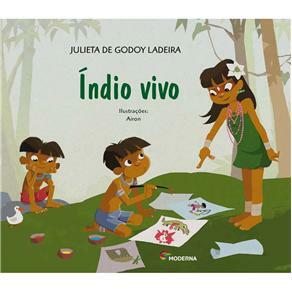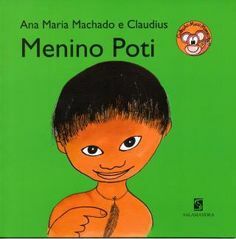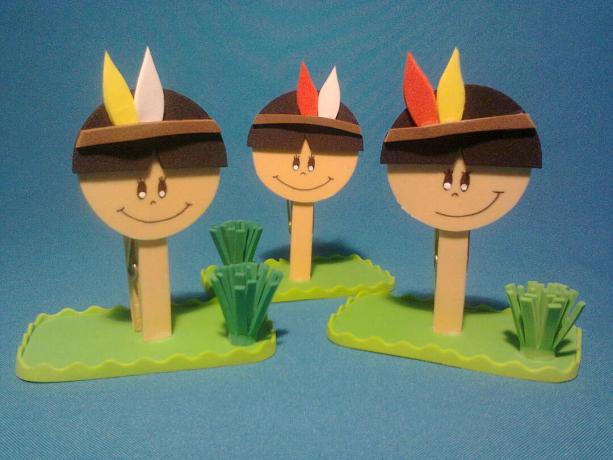We selected in this post several suggestions for your Indian Day Project for Early Childhood Education. Indian Day is celebrated annually on April 19th.
O Indian's day is celebrated annually in April 19th in Brazil. This important date serves to remember and reinforce the identity of the Brazilian and American indigenous people in current history and culture.
During Indian Day, schools and other cultural and educational institutions encourage children and young people to learn about the different cultural practices of indigenous peoples.
And it was with this in mind that we selected these wonderful suggestions for your Indian Day Project for Early Childhood Education, check out:
Index
Indian Day Project for Early Childhood Education
This one Indian Day Project for Early Childhood Education lasts approximately 1 week:
Activity Sequence:
Culmination:


Indian Day Project for Early Childhood Education – Indian
According to the PCN's, it is necessary for the student to know and value the plurality of Brazilian sociocultural heritage, as well as sociocultural aspects of other peoples and nations, taking a stand against any discrimination based on cultural, social class, belief, sex, ethnic or other individual characteristics and social.
The Indian Day is a rescue of our history and our roots. The theme gives the student the opportunity to perceive themselves in other social groups, helping them to build their identity, in acting as the other group in social life, in the preservation of the environment in which they live and in the construction of values.
Others in: Lesson Plan - Music for the Indian Day

Indian Day Project for Kindergarten and Elementary Education
This Indian Day Project for Early Childhood Education, which we will make available below, was prepared by teacher Valéria Tavares and belongs to her wonderful blog: www.ensinandocomcarinho.com.br
The commemorative dates must be worked interdisciplinary in class. The Indian's Day is a special date that is always widely explored among children, making them know and value the plurality of Brazilian sociocultural heritage, in addition to cultural differences, the different peoples. Working the day of the Indian is to rescue our history and our roots. The project helps students to understand and build their identity and perceive themselves as an integral part of a society full of unique characteristics, values and cultures.
Others in: Gift Ideas and Templates for the Indian Day


More in: Activities for the Indian Day – 1st and 2nd year

Indian Day Project for Early Childhood Education and Initial Series
Objective: Work on the relationship of respect and preservation that indigenous people have with nature.
Activities: Reading to the class and then interpreting; ask the children to retell the story
Objective: Working on the physical characteristics of the indigenous characters in these works: Peri and Iracema – male and female.
Activities: Collectively make our Peri and Iracema using students as a mold – cutting, collage and painting.
Objective: To work valuing the wisdom of the elderly in the transmission of knowledge through orality – an indigenous legend that tells of the acquisition of fire by man.
Activities: Watch the video making comments/questions relevant to the story. Conduct the interpretation of the story. Ask students to retell the story.
Objective: Work on the characteristics of a village and indigenous customs.
Activities: Watch the video making comments and questions relevant to the story. Ask students to recount the story by dramatizing some scenes.
Get to know CUITÉ and collectively manufacture our cuité gourds.
Objective: Working body, movement, language and quantity.
Activities: Dance and sing. Pay attention to the animation of the clip – more/less Indians in the canoe.
Objective: Working on the characteristics, clothing and habitat of indigenous peoples through images of Brazilian Indians.
Activities: Get to know the real image of Brazilian Indians, identify elements that make up their natural habitat, their objects and clothing. Observe the physical characteristics of these Indians.
Objective: Working body, movement and language – dancing and singing. Relaxation. Identify some instruments in music. Recognize the rhythm of the music. Knowing and the indigenous instrument Pau-de-chuva.
Activities: Lie down, close your eyes and listen to the music. Imagine scenes relating to indigenous everyday life. Follow the rhythm of the music with your palms and feet. Knowing, listening to and handling the Pau-de-chuva. Get to know a sound close to that of indigenous music.
Subscribe to our email list and receive interesting information and updates in your email inbox
Thanks for signing up.

